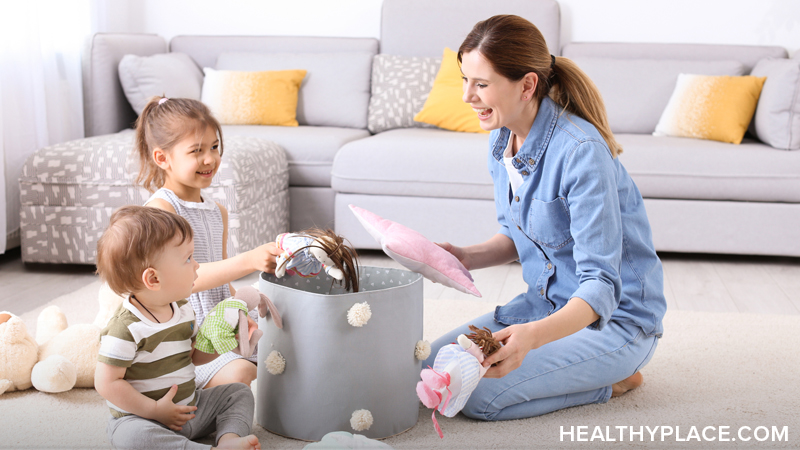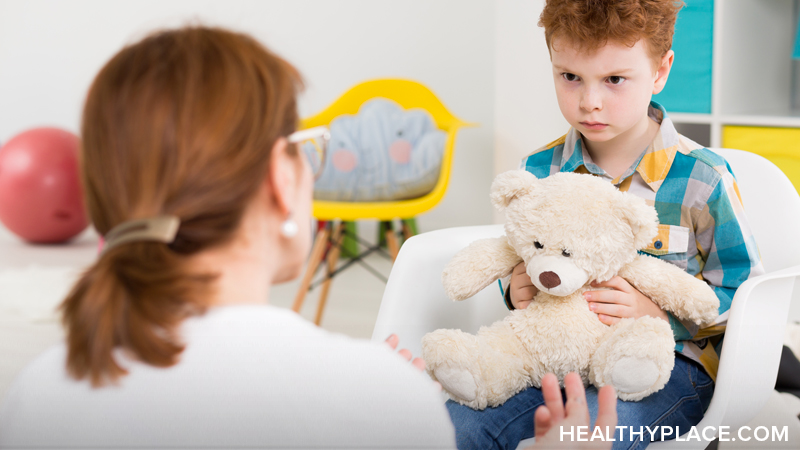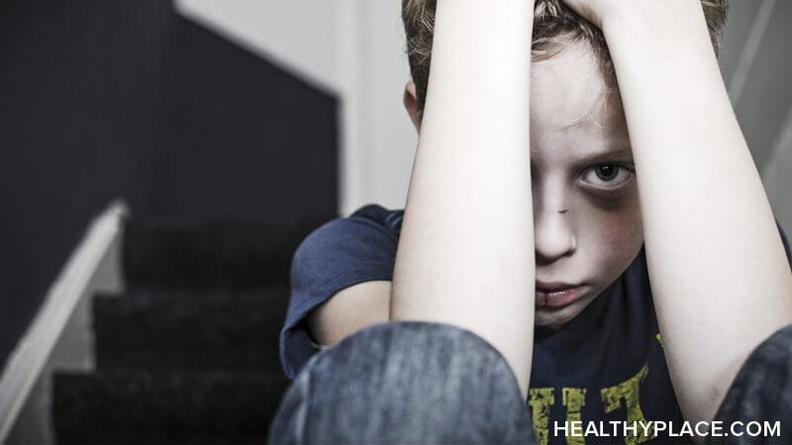Parenting Information Articles

In-depth parenting information articles covering parents of children with mental illness, parents with mental illness and child development.
Abuse
Behavior Disorders and Behavior Problems
Bullies
Child Mental Health
Child Therapy
Chronic Pain
Co-parenting
Discipline
Discipline When Your Child Has a Mental Illness
Gender
Learning Disabilities and Special Needs
Parental and Caregiver Stress
Parenting Children with Mental Illness
- Medications for Children
- Addictions
- ADHD
- Anxiety
- Autism
- Bipolar Disorder
- Borderline Personality Disorder
- Depression
- DMDD
- Eating Disorders
- Oppositional Defiance Disorder
- Schizophrenia
- Self-Injury
Parenting for Parents with a Mental Illness
Parenting Help
Parenting Skills and Strategies
Parenting Style
Parenting Fails
Parenting Tips for Specific Situations
Parenting Teenagers
Relationships
Mental Health Stigma
More Parenting-Related Information
Abuse
- Child Sexual Abuse
- Responding To Child Sexual Abuse
- Helpful and Harmful Reactions to Disclosure of Sexual Abuse
- When to Seek Help for Your Child
- Seeking Professional Help for Your Sexually Abused Child
- Getting Psychological-Psychiatric Help For Your Child
- Parenting the Sexually Abused Child
- Helping Your Sexually Abused Child Cope
- Stages of Grief When Parents Learn Their Child Was Sexually Abused
- Specific Parenting Issues in Dealing with Child Sexual Abuse
- Protecting your Children from Sexual Predators
Behavior Disorders and Behavior Problems
- What Are Emotional and Behavioral Disorders?
- A Comprehensive List of Child Behavior Disorders
- What Causes Emotional and Behavioral Disorders?
- Is There Such Thing as a Bad Child?
- Can a Child with Behavior Problems Learn to be ‘Good’?
- What Are Child Behavior Problems?
- My Child Has Behavior Issues – What Can I Do?!
- My Child is Developing Behavior Problems at School: Help!
- What Behavior Modification Techniques Might Help My Child?
Bullies
- What Is a Bully?
- Why Children Get Bullied and Rejected
- Types of Bullies
- What Parents Need to Know About Bullying
- Cyberbullying: How to Protect Your Child from Cyberbullies
- The Impact of Bullying
- What to Do If You Are Being Bullied
- What If Your Child Is a Bully?
- How to Help Your Child Stop Bullying
- Causes of Bullying, Bullying Behavior in Bullying Child
- How to Help Your Son Deal with Mean Boys
- How to Help Your Child Deal with Bullies
- Help Dealing With Bullies for Parents and Teachers
- Empowering Kids to Deal with Bullies and Low Self-esteem
- Bully Advice for Kids
- Bully Victim No More
- What Happens to Child Victims of Bullies
- Youth Violence Prevention
Child Mental Health
- What is Infant Mental Health?
- Adolescent Mental Health
- Guide to Treatment for Children With Mental Health Needs
- Child and Adolescent Mental Illnesses FAQ
- Teacher's View of Your Child's Mental Health
- 12 Questions Parents Should Ask About Your Child's Mental Health
- Your Child's Mental Health Is Important Too
- Can Parents Tell if Their Child is Mentally Ill?
- Parental Conflict Produces More Than Fleeting Distress for Children
Child Therapy
- What Is Child Therapy? Types of Child Therapy and How It Works
- Will Counseling for My Children Solve All of Our Problems?
- What Can Family and Child Counseling Do for Your Family?
- Is There Child Therapy for Anxiety? My Child Is Extremely Anxious
- What Kinds of Therapy Exist for Autism?
- How Does Child Therapy Address Anger Management?
- Are There Downsides to Participating in Child Therapy Groups?
- What Is Play Therapy? Definition, Types and Benefits
- The Role of Play Therapy Toys
Chronic Pain
- Pain and Your Child or Teen
- Conquering Your Child’s Chronic Pain
- How to Support Your Child with Chronic Pain
Co-parenting
- What Is Co-Parenting?
- Do We Need Co-Parenting Counseling, Therapy or Mediation?
- Tips for Co-Parenting with a Toxic Ex
- What Is a Parenting Plan and How Do I Make One?
- Are Co-Parenting Classes Helpful for Divorced Parents?
- Is a Parenting Marriage Healthy for Your Children?
Discipline
- Do You Really Know How to Discipline Your Child?
- How to Discipline a Child Without Hitting or Yelling
- Is There a Way to Discipline a Child Who Just Won’t Listen?
- What Should You Do When Your Child Lies?
- Lying Children: How to Help Children Who Lie
- How to Discipline a Child for Hitting Others
- Disrespectful Child: What Kind of Discipline Should You Use?
- How Do You Discipline a Child for Misbehaving in School?
- Ways to Discipline Ungrateful, Spoiled Children
- Giving Children Constructive Criticism
- Reinforcing Positive Behavior at Home
- Three-Stage Discipline Plan
- Too Much Attention -- As Bad as Too Little
- Who Has the Last Word?
- Should Parents Bribe Their Children to Behave?
Discipline When Your Child Has a Mental Illness
- How Should You Discipline a Depressed Teenager?
- Conduct Disorder Interventions Help
- Discipline and Interventions for Child with DMDD
- How to Discipline a Child with Oppositional Defiant Disorder
- Deciding How to Discipline Your Autistic Child
- Disciplining a Child with Reactive Attachment Disorder
- What to Avoid When You Discipline a Child with PTSD
- What’s the Best Way to Discipline a Child with ADHD and ODD?
- I Need to Know How to Discipline My Child with ADHD. Now.
- What Does an ADHD Reward System Have to Do With Discipline?
Gender
Learning Disabilities and Special Needs
- How Do You Define a Special Needs Child?
- What Is a Learning Disability? Definition of Learning Disability
- Learning Disabilities Vs. Intellectual Disabilities
- Learning Disabilities Statistics and Prevalence
- What Is a Specific Learning Disability? Specific LD Definition
- What Are the Different Types of Learning Disabilities?
- What Learning Disabilities in Children Show Up Earliest?
- Learning Disability Symptoms and Signs for Concerned Parents
- What Are the Characteristics of a Learning Disability?
- Can I Test My Child for a Learning Disability Online?
- How Do You Spot a Math Learning Disability?
- What Is a Language-Based Learning Disability?
- What Is a Nonverbal Learning Disorder or Disability?
- What Causes Learning Disabilities?
- How Do I Get a Learning Disabilities Diagnosis for My Child?
- What Are Treatments for Learning Disabilities?
- What’s an Individualized Education Program? Who Needs One?
- A Learning Disabilities IEP: How Does It Help Your Child?
- How Do Students with Learning Disabilities Affect the Classroom?
- Is Autism a Learning Disability? Why or Why Not?
- Tips for Parenting Children with Special Needs
- Where Can I Get Learning Disabilities Resources for Parents?
Parental and Caregiver Stress
- Parental Guilt and Kids with Special Needs
- You Are Not Alone: For Parents When They Learn That Their Child Has A Disability
- The Role of Caregivers for People with Mental Illness
- Accepting Your Loved One Has A Mental Illness
- The Partnership Between the Psychiatrist, Psychologist and Caregiver
- Caregiver Stress and Compassion Fatigue
- Preventing the Contagion of Stress
- Taking A Break from Caregiving
- Exasperating: Getting Treatment for Mentally Ill Child
- Parents Give Up Custody to Get Help for Mentally Ill Daughter
- The Stress of Being A Single Parent Family
Parenting Children with Mental Illness
- Raising Children Diagnosed with a Mental Illness
- Parenting a Teenager Who Is Living with Mental Illness
- Can Parenting Classes Help If My Child Has a Mental Illness?
- Can Parents Tell if Their Child is Mentally Ill?
Medications for Children
- Antidepressant Medication for Children and Teen
- Guide to Psychiatric Medications for Children and Adolescents
Addictions
- Warning Signs of Drug and Alcohol Abuse
- Talking to Your Kids about Drugs and Alcohol
- How to Discuss Drinking with Your Child (Ages 5 - 8)
- Parenting Teens Who Have Addictions
- Addicted to Video Games
ADHD
- Parenting a Child with ADHD
- The Difficulty of Diagnosing ADHD and Bipolar Disorder in Children
- How Parents Can Help Their ADHD Child
- What Kinds of Therapy for an ADHD Child Exist? Do They Work?
- Child Behavioral Therapy for Kids with ADHD: What to Expect
- Helping Your ADHD Child Succeed in School
- ADHD and Learning Disabilities: What’s the Connection?
- The Impact of ADHD on Siblings
- Parenting an ADHD Teenager
Anxiety
- Must-Have Skills for Parenting Children with Anxiety
- How to Help Children Cope with Fear and Anxiety
- Panic Disorder In Children And Adolescents
- Helping Your Teen Deal with Stress
- Understanding School Refusal
- Tips for Parents of Students with School Refusal
- Helping Your Child with OCD
- Parenting a Child with OCD While Maintaining Your Sanity
- Trauma-Informed Parenting 101: Parenting a Child with PTSD
- Teens With Social Anxiety Need Communication Skills
- Helping Your Child with Separation Anxiety Disorder
- Dealing with a Child with Early Separation Anxiety Issues
- Child Phobia: Sports Phobia, Fear of Playing Sports
- Children and Scary News Events
- 3 Key Things to Prepare Children to Deal with Traumatic Events
- Helping Your Child Overcome Fear of Terrorism
- How to Talk About Tragic Events with Your Children
Autism
Bipolar Disorder
- How Does Bipolar Disorder Present in Children and Adolescents?
- Parenting A Bipolar Child
- Tips for Parents Raising Bipolar Children
- Disciplining Your Bipolar Child
- Help at Home: For Parents of Bipolar Children
- How to Handle Unwanted Parenting Advice
- Mother Fights to Save Her Bipolar Sons
- 'Reclaim Your Life,' says Mom of Child with Manic Depression
- Mood Disorders in Children
- Child and Adolescent Bipolar Disorder
Borderline Personality Disorder
Depression
- Teen Depression: What Parents Need to Know
- Symptoms of Childhood Depression
- Communicating with Your Depressed Child
- Dealing with Your Teen's Depression Diagnosis
- Parenting a Child with Depression
- Suicide and Teenagers
- Is Your Child Contemplating Suicide?
- Getting Help to Deal with the Aftermath of Suicide Attempts
DMDD
- What is Disruptive Mood Dysregulation Disorder (DMDD)?
- Symptoms of Disruptive Mood Dysregulation Disorder
- DMDD Diagnosis: DSM 5 Criteria for Disruptive Mood Dysregulation Disorder
- What are the Causes of DMDD?
- Treatment for Disruptive Mood Dysregulation Disorder
- Challenges of Parenting a Child with DMDD
- Can an Adult Be Diagnosed with DMDD?
- DMDD vs Bipolar Disorder: What’s the Difference?
- DMDD and Autism: How Are the Two Related?
Eating Disorders
- Eating Disorders Information for Parents
- Getting Help For Your Child's Eating Disorder
- When Your Child Has an Eating Disorder: A Step-By-Step Workbook for Parents and Other Caregivers
- Danger Signs Your Child Has An Eating Problem
- Helping Your Child Achieve a Healthy Weight
- Preventing Eating Disorders in Your Family
Oppositional Defiance Disorder
Schizophrenia
Self-Injury
- What Is Self-Injury and What Can Parents Do About It?
- Why Do Self-Injurers Engage in Self-Harm?
- As A Parent, How Do You Deal with A Child Who Self-Injures?
- For Parents: Coping with A Child Who Self-Injures
- My Child Self-Injures, Self-Harms
Parenting for Parents with a Mental Illness
- Issues for Parents with Mental Illness
- Impact of a Parent’s Mental Illness on Children
- The Effects of Parenting with a Mental Illness on Child Development
- Children of Parents with Mental Illness Need Resilience
- Parents with Mental Illness and Child Custody Issues
- Ways We Make Parenting with Anxiety Even Harder
- Parenting with Depression and What to Tell Your Children
- Tips for Parenting with Borderline Personality Disorder
- Parenting with OCD: How Does Your OCD Affect Your Kids?
- Parenting with PTSD: Preventing Secondary PTSD in Your Children
- How Do You Deal with the Stress of Parenting in Recovery?
Parenting Help
- Is There a Perfect Parenting Guide?
- Should I Get Some Parenting Education Before the Baby Comes?
- Parenting Hacks That Take Some Stress Off Your Shoulders
- Parenting Is Hard! How to Conquer Burnout and Exhaustion
- Where Can I Get Quick Parenting Help?
- Parenting Apps That Help You Keep It All Together
- Parenting Support Groups and Online Forums: Do They Really Help?
- Parenting Coaching or Counseling: Which Is Best for You?
- ‘Good Enough Parenting’ Has Its Time and Place
- Parenting Resources: Organizations That Help Parents
Parenting Skills and Strategies
- What Is Parenting? What Does It Mean to be a Parent?
- Parenting 101: What You Must Know About Raising Kids
- Parenting Goals and Expectations Must Pass the Reality Test
- What Is Good Parenting?
- Good Parenting Qualities and Characteristics You Can Develop
- Good Parenting Skills That Will Benefit Your Family
- Top 5 Parenting Skills You Need in the Digital Age
- 10 Ways to Have More Responsible Children
- 10 Suggestions for Positive and Effective Parenting
- Common Parenting Issues and How to Deal with Them
- Dealing with Parenting Advice You Don’t Want or Need to Hear
- Parenting Skills and Benefits of Coaching Your Child
- Stages of Intellectual Development In Children and Teenagers
- Defining Normal Behavior as Our Children Grow
- Your Child's Temperament and What Each Type Needs to Grow
- Building Your Child's Self-Esteem
- How to Stop Over-Reacting as a Parent -- Sometimes
- For Parents with Low Self-Esteem, Psychological First Aid
Parenting Style
- How Your Parenting Style Can Affect Your Child’s Mental Health
- General Guidelines for Parenting: There Are No Rules
- Strict Parenting vs Permissive Parenting: Finding a Middle Ground
- Helping Controlling Parents Ease Up on Their Children
- Develop Your Parenting Philosophy: Strategies That Make You Great
Parenting Fails
Parenting Tips for Specific Situations
- Parenting Tips for When Your Tween Has a Meltdown
- 5 Tips for Raising a Strong-Willed Child
- Parenting Gifted Children to Succeed in Life
- The Best Parenting Strategies for Highly Sensitive Children
- Raising A Psychologically Healthy Child
- How Do I Raise an Emotionally Healthy Child?
- How to Create an Emotional Bond with Your Child
- Childhood Aggression: Teaching Your Child Impulse Control
- Helping the Impulsive Child with Impulse Control
- Impact of a Reactive Parent on a Child's Self-Control
- Help Your Child with Mature Social Skills, Better Self-Control
- Teaching Anticipation Skills to Children
- Persecution Complex: Does Your Kid Feel Like a Victim?
- Tips to Increase Children’s' Self-Motivation
- Teaching Control to Your Overly Competitive Child
- How to Help Children with Negative Thinking
- Seven Steps in Coping with a Negative Child
- Teaching Empathy Skills to Your Self-Centered Child
- Help Your Overly Dependent Child Be More Independent
- Parenting the Highly Sensitive Child, Over Sensitive Child
- Teach Your Judgmental Child to Be Open-Minded
- Teaching the Closed Minded Child To Be More Open-Minded
- Problems with Friends at School
- Parenting Difficult Children
- Coaching Assertiveness To The Overly Passive Child
- Coaching The Child Who Struggles with Social Awkwardness
- Coaching Flexibility To The Overly Rigid Child
- Coaching Forgiveness To The Grudge-Holding Child
- Coaching Optimism To The Pessimistic Child
- Coaching The Argumentative Child
- Coaching The Emotionally Immature Middle Schooler
- Signs Your Child May Be Involved in Gang or School Violence
- How to Know If Your Child Might Be at-Risk Online
Parenting Teenagers
- Teen Emotions: 3 Ways for Parents to Deal with Them
- Teaching Social Maturity to Your Teenager
- Tips to Improve Communication with Your Teenager
- Child Dropping Out of College? Advice for Parents
- Parenting and Coaching the Hypersensitive Teen
- Setting Ground Rules for Teen Dating
- Seven Tips for Talking to Your Teen About Sex
Relationships
Dads
- The Importance of Being A "Good" Father
- Dad's Role Has Changed Over the Years
- Keys to a Great Father-Child Relationship
- The Connection Between Father and Son
- How to Improve Father-Son Relationships
Divorce
- Talking to Your Young Child about Divorce
- Impact of Divorce on Children
- Does Your Kid Need Child Counseling for Divorce When You Split?
- What Are Parental Rights and Responsibilities?
Parental Roles
- A Parent's Job as a Role Model
- Do Mom and Dad Still Have Differing Parental Roles?
- Definition and Role of a Parent Coach
Siblings
- Help for Siblings of Child with Special Needs
- Fighting Brothers: How to Bring Peace to Young Siblings
- How to Deal with Sibling Rivalry
- How Kids Experience the Special Needs of Their Sibling
Mental Health Stigma
More Parenting-Related Information
Videos on Parenting
- Videos on Parenting, Parenting Difficult or Special Kids, Kids Development and More
- Parenting a Child with Autism
- Suicide Video: How to Explain Suicide to Children
Blogs on Parenting
APA Reference
Staff, H.
(2022, January 11). Parenting Information Articles, HealthyPlace. Retrieved
on 2025, November 9 from https://www.healthyplace.com/parenting/parenting-information-articles








